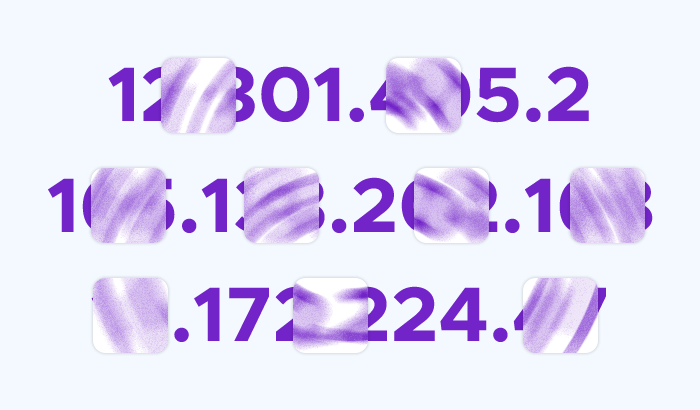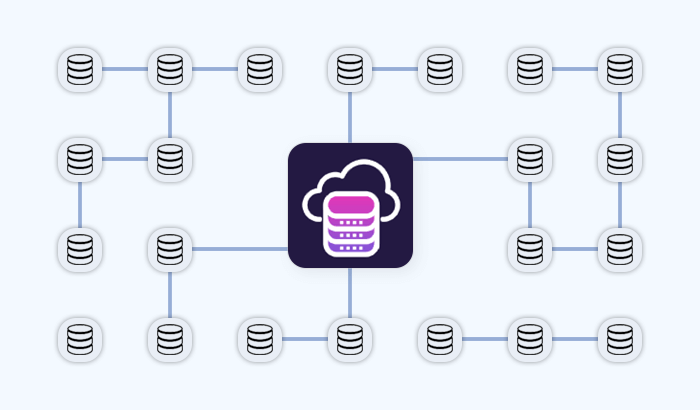- Data Formats Overview
- JSON: A Flexible Format for Structured Data
- CSV: The Simplicity of Plain Text Tables
- XLSX: A Format Made for Presentation and Analysis
- JSON: Pros and Cons
- CSV: Pros and Cons
- XLSX: Pros and Cons
- When JSON Makes Sense
- When CSV Makes Sense
- When XLSX Makes Sense
- Frequently Asked Questions
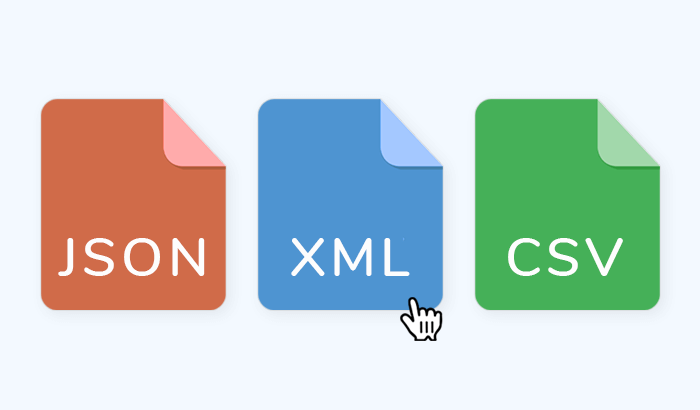

When working with web-scraped data, choosing the right export format is more than a technical detail – it directly affects how easily that data can be analyzed, shared, or integrated. Whether you're building automated workflows, generating reports, or delivering insights to stakeholders, the format you choose – CSV, JSON, or XLSX – can make a big difference. In this guide, we’ll explore how each format works, where it shines, and how to pick the one that best fits your use case.
Data Formats Overview
When working with web-scraped data, the format in which that data is delivered can make a significant difference. Standardized formats like CSV, XLSX, and JSON aren’t just technical options – they're what enable data to actually be useful once it's collected.
The first and most obvious reason is compatibility. These formats are universally supported by a wide range of tools and platforms, from spreadsheet software like Excel and Google Sheets to databases, business intelligence tools, and programming languages. Without a standardized format, moving data between systems would be error-prone and inefficient.
Standard formats also support automation. Whether you're building a reporting dashboard, training a machine learning model, or simply updating a spreadsheet every morning, automation relies on consistency. CSVs and JSON files, for example, allow developers to create repeatable processes that expect data in a predictable structure.
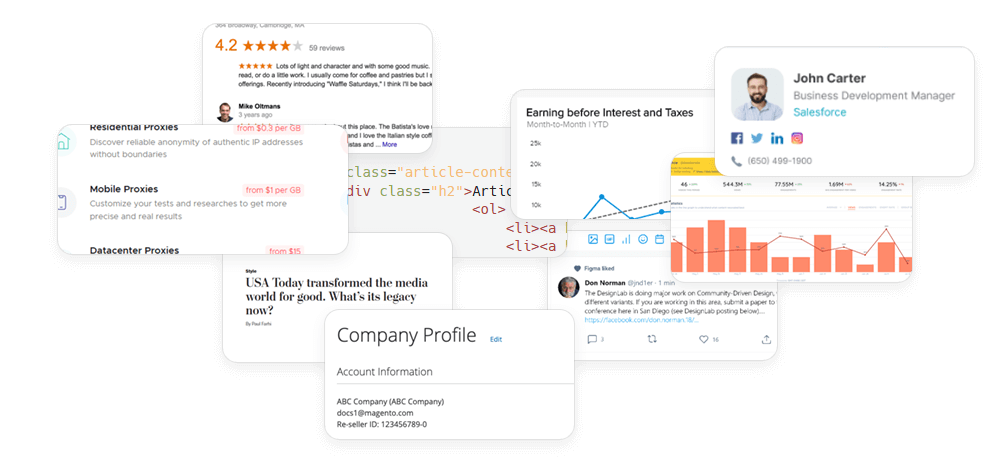
Then there’s the human factor. Not everyone consuming web-scraped data is a developer. Business analysts, marketers, and other stakeholders often need to work directly with this data, and formats like XLSX – complete with charts, filters, and styling – make it much easier for non-technical users to understand and act on the insights.
Another key benefit is scalability. As the volume and complexity of scraped data grow, standardized formats help maintain performance and portability. JSON is particularly useful here, as it allows for deeply nested structures – ideal for things like product listings with specifications, images, and reviews – all in a single, readable package.
JSON: A Flexible Format for Structured Data
JSON (JavaScript Object Notation) is a lightweight, text-based format used for storing and exchanging structured data. Originally derived from JavaScript, it's now language-agnostic and widely supported across programming environments, making it a staple in modern data workflows – especially in APIs and web scraping.
What makes JSON especially useful is its ability to represent complex, nested structures in a readable way. Unlike flat file formats like CSV, JSON allows you to store data in key-value pairs, arrays, and nested objects, making it ideal for representing hierarchical or relational data.
Here’s a simple example of what JSON might look like when scraping hotel pricing data:
{
"hotel_name": "Hotel Barcelona Center",
"location": "Barcelona, Spain",
"rooms": [
{
"type": "Standard Single",
"price": 142,
"currency": "EUR",
"available": true
},
{
"type": "Deluxe Double",
"price": 198,
"currency": "EUR",
"available": false
}
],
"rating": 4.3
}
In this example, the data isn't just a list of values – it reflects a logical structure. The hotel has a name, location, and a nested list of rooms, each with its own attributes. This kind of representation makes JSON especially powerful when dealing with complex domains like travel listings, product catalogs, or user reviews.
At Infatica, we support JSON as a delivery option for all of our scraping services. Whether you're accessing datasets through our API or receiving custom scraping results, JSON gives you a flexible, machine-friendly format that fits seamlessly into automated pipelines and development environments.
CSV: The Simplicity of Plain Text Tables
CSV, short for Comma-Separated Values, is one of the most common formats for storing and exchanging tabular data. Despite its simplicity, it remains a powerful and highly compatible option – particularly when working with straightforward datasets like lists, tables, or spreadsheets.
A CSV file represents data in rows and columns, with each line corresponding to a single record and each field separated by a comma (or other delimiters, such as semicolons or tabs in some regions). Because it’s just plain text, CSV files are easy to generate, lightweight to store, and fast to parse.
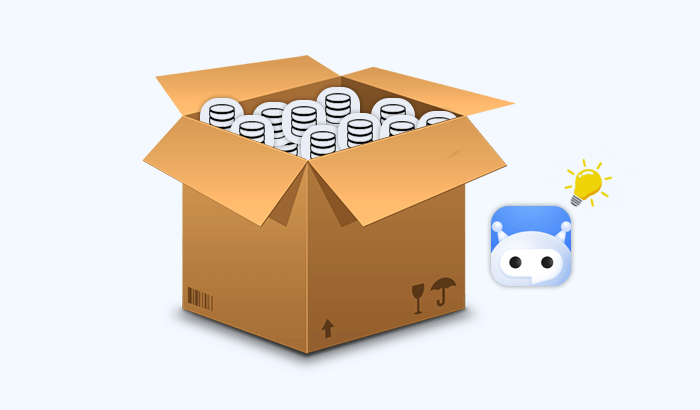
Here’s what the same hotel pricing data might look like in CSV format:
hotel_name,location,room_type,price,currency,available,rating
Hotel Barcelona Center,Barcelona, Spain,Standard Single,142,EUR,true,4.3
Hotel Barcelona Center,Barcelona, Spain,Deluxe Double,198,EUR,false,4.3
In this example, the hotel details are repeated for each room type – this is a key difference compared to JSON. CSV doesn't support nesting or hierarchy, so all data must be flattened into rows. This makes it ideal for structured, uniform datasets like product lists, transaction logs, or pricing tables, where every record shares the same fields.
At Infatica, we offer CSV exports across all our scraping solutions – from on-demand datasets to fully customized scraping services. Whether you're building a data pipeline or preparing a weekly report, CSV offers a reliable, no-frills format that’s ready for immediate use.
XLSX: A Format Made for Presentation and Analysis
XLSX is the modern file format used by Microsoft Excel and other spreadsheet programs. Unlike CSV, which is limited to plain text and a single sheet, XLSX supports rich formatting, formulas, charts, multiple tabs, and more. This makes it especially useful when scraped data is meant for reporting, collaboration, or presentation.

Under the hood, XLSX is a zipped collection of XML files, but for most users, it’s simply the familiar Excel format. It's designed not just for storing data, but for working with it – applying filters, highlighting trends, and visualizing results.
Here's an example of what hotel pricing data might look like in XLSX format:
| hotel_name | location | room_type | price | currency | available | rating |
|---|---|---|---|---|---|---|
| Hotel Barcelona Center | Barcelona, Spain | Standard Single | 142 | EUR | TRUE | 4.3 |
| Hotel Barcelona Center | Barcelona, Spain | Deluxe Double | 198 | EUR | FALSE | 4.3 |
While this might look similar to a CSV, the XLSX version could include additional features like:
- Conditional formatting (e.g., highlight unavailable rooms in red)
- Multiple sheets (e.g., separate tabs for different hotel chains)
- Embedded charts (e.g., average price per room type)
- Filters and pivot tables for deeper analysis
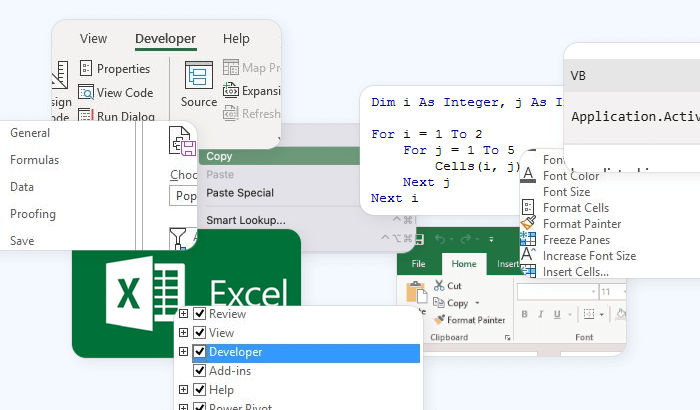
At Infatica, we support XLSX exports for clients who want data that’s immediately ready for review or integration into existing spreadsheet workflows. Whether you're monitoring prices, competitors, or market trends, XLSX ensures that your scraped data is not just accessible – but actionable.
JSON: Pros and Cons
JSON has become a go-to format for developers and data teams working with scraped web data, thanks to its structured, flexible nature. But like any format, it has strengths and limitations depending on the use case.
Advantages of JSON
One of JSON’s biggest strengths is its ability to represent nested and hierarchical data. If you're scraping content with layers of information – like product listings with variants, user reviews, or hotel rooms with availability details – JSON allows that structure to be preserved naturally. This makes it particularly useful for working with data from eCommerce sites, travel aggregators, or social media platforms.
Another key advantage is its machine-readability and language neutrality. JSON is supported out of the box in nearly every modern programming language, including Python, JavaScript, Java, and Ruby. This makes it an ideal choice for automated pipelines, APIs, and integrations where consistency and structure are essential.
JSON is also lightweight and compact, which makes it efficient for transferring data over networks – especially in RESTful APIs or cloud workflows. It doesn’t carry the visual or formatting overhead of XLSX files, nor does it require repeated headers like CSV, making it efficient for both storage and transmission.
Limitations of JSON
Despite these strengths, JSON isn’t always the best choice for every audience. It’s not optimized for human readability – especially when dealing with large datasets or deeply nested structures. For users who aren’t developers, a raw JSON file can be difficult to interpret without additional tools or formatting.
Another challenge is that JSON doesn't handle tabular data as cleanly as CSV or XLSX. Flattening a JSON structure to fit into spreadsheets can require extra steps and sometimes leads to data loss or misrepresentation, especially if the structure is inconsistent.
Lastly, JSON doesn’t support formatting, formulas, or visual elements – so it’s not ideal for reports, dashboards, or collaborative analysis. It’s a format designed for structure and automation, not presentation.
CSV: Pros and Cons
CSV is one of the oldest and simplest formats for storing data – and that’s exactly what makes it so enduring. When it comes to handling straightforward, flat datasets, CSV files offer a blend of speed, compatibility, and ease of use that few other formats can match.
Advantages of CSV
The biggest benefit of CSV is its simplicity. It stores data as plain text, with rows representing records and commas (or other delimiters) separating fields. This structure is easy to generate and process, making CSV files highly efficient for both machines and humans.
CSV is also extremely lightweight. There’s no overhead from formatting, metadata, or extra structure, which makes CSV ideal for large datasets and fast data transfer. It's especially well-suited for exporting log data, product lists, pricing tables, and similar uniform data types.
Another key strength is universal compatibility. Virtually every data tool – Excel, Google Sheets, databases, statistical software, programming languages – can open or import CSV files without the need for plugins or special configurations. This makes it perfect for sharing data across teams with varying technical backgrounds.
Finally, CSV is human-readable and editable, even in a basic text editor. If a stakeholder needs to quickly check a value or make a quick edit, they can do so without needing any special software.
Limitations of CSV
While CSV is perfect for flat, tabular data, it struggles with complex or hierarchical structures. There’s no native support for nesting, grouping, or representing relationships between entries, which makes it a poor fit for data with internal structure – like a product with multiple variants or a hotel with different room types.
Another limitation is that CSV doesn't support data types, formatting, or metadata. All values are treated as text unless the application interpreting the file applies its own logic. That means no formulas, no formatting, and no support for things like multiple sheets or embedded charts.
Additionally, CSV can be prone to parsing issues when data contains commas, line breaks, or special characters. Proper quoting and escaping are required, and inconsistent handling across different systems can lead to corrupted or misinterpreted data.
XLSX: Pros and Cons
XLSX is the standard file format for Microsoft Excel – and by extension, for many business workflows around the world. More than just a way to store data, XLSX brings structure, interactivity, and visual clarity to datasets, making it a preferred format for reporting and collaboration.
Advantages of XLSX
One of XLSX’s main strengths is its support for rich formatting. Unlike CSV or JSON, XLSX can include colors, fonts, conditional formatting, charts, and data validation – features that make data not only readable but also visually insightful. This is especially useful when scraped data is shared with non-technical stakeholders who prefer to analyze trends or spot issues visually.
XLSX also allows for multiple sheets in a single file, which is ideal for organizing complex datasets. For example, data from different marketplaces or product categories can be placed on separate tabs, making navigation easier without fragmenting the file.
Another advantage is the ability to include formulas, filters, and pivot tables, which allow users to analyze the data directly within Excel. This makes XLSX an excellent choice when scraped data needs to go straight into business processes – whether for financial forecasting, price comparison, or inventory monitoring.
Lastly, XLSX is widely supported by spreadsheet software (Excel, Google Sheets, LibreOffice) and can be exported or imported using many modern data tools and platforms.
Limitations of XLSX
Despite its strengths, XLSX is not without drawbacks. It’s a heavier and more complex format than CSV or JSON, which can slow down performance when dealing with very large datasets or when transferring files across systems. It’s also less efficient for automation, as parsing XLSX files typically requires specific libraries and adds complexity to data pipelines.
Another limitation is that XLSX is not ideal for nested or hierarchical data. Like CSV, it assumes a tabular structure, which means data must often be flattened or restructured to fit – potentially losing some relationships or depth in the process.
While the format is broadly supported, it’s still tied closely to Microsoft’s ecosystem, and some features (like advanced formatting or macros) may not render properly in non-Excel environments. This can create friction in workflows that involve tools like Google Sheets or cross-platform collaboration.
When JSON Makes Sense
JSON is best suited for structured, hierarchical data – especially when that data will be consumed programmatically. If your web scraping project involves APIs, development environments, or automated pipelines, JSON is the ideal format.
Use JSON when:
- You need to preserve relationships or nesting – for example, when each product includes multiple variants, or each hotel includes a list of room types.
- You're feeding data into backend systems, databases, or APIs that expect structured input.
- Your team is composed of developers or data engineers who are comfortable working with code and structured data.
- You want to maintain consistency in data formats across different stages of a data pipeline – from scraping to transformation and loading.
At Infatica, we often recommend JSON to clients building large-scale data platforms or integrating scraped data into business systems.
When CSV Makes Sense
CSV is ideal for flat, tabular datasets – and when simplicity, portability, and broad compatibility are top priorities. It’s perfect for teams that need data quickly and plan to manipulate it using common tools like spreadsheets or databases.
Use CSV when:
- Your data fits neatly into rows and columns, such as pricing tables, product lists, or search results.
- You want to quickly import or export data into tools like Excel, Google Sheets, or PostgreSQL.
- You’re working with large volumes of data and need a lightweight, efficient file format.
- The data will be handled by a mix of technical and non-technical users, with minimal formatting needs.
At Infatica, CSV is a popular choice for clients looking to analyze scraped data with minimal setup – especially in eCommerce, real estate, and travel sectors.
When XLSX Makes Sense
XLSX is the go-to format when presentation, structure, and collaboration are just as important as the data itself. It’s especially valuable when scraped data will be reviewed or manipulated by business stakeholders, analysts, or executives.
Use XLSX when:
- You need to include visual elements like charts, filters, or conditional formatting to help communicate insights clearly.
- You're preparing data for client reports, internal presentations, or operational reviews.
- The file is going to be shared with non-technical users who are familiar with Excel but not with raw data formats.
- You need to organize data across multiple sheets, for example by product category, time period, or region.
Infatica often recommends XLSX when clients are preparing market analysis, price monitoring reports, or competitive research summaries – where data clarity matters as much as data content.









